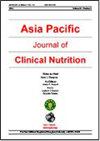食品与营养科学:新范式。
IF 1.3
4区 医学
Q4 NUTRITION & DIETETICS
Asia Pacific journal of clinical nutrition
Pub Date : 2022-03-01
DOI:10.6133/apjcn.202203_31(1).0001
引用次数: 5
摘要
营养发明于19世纪初,是一门将食物转化为重要化学成分的生物化学科学。从那时起,营养学的教学和实践就建立在这个概念框架或范式的基础上。这里给出的例子是饮食指南和其他食物指南。上世纪中叶发布的第一批指南旨在帮助预防营养缺乏,促进生长,并确保充足的饮食。这些推荐的食物被认为含有足够的蛋白质、脂肪、碳水化合物、维生素、矿物质和微量元素,以及膳食能量。在食品工业生产加速的时代,它们通常是有效的。在本世纪下半叶,美国、英国和其他高收入国家制定并修改了指南,以应对心脏病的快速上升。这些建议减少所有类型的高脂肪、饱和脂肪、胆固醇和钠的食物,更多的“复合碳水化合物”,以及富含微量成分的水果和蔬菜。它们可能产生了一些有限的影响。在本世纪和现在,为了应对已经成为流行病的肥胖和糖尿病,主导指南再次发生了变化。这些建议减少饱和脂肪、糖和钠含量高的食物,减少对总脂肪的重视,增加对糖的重视。它们并不有效。所有这些指南都源于营养科学的生物化学范式,并受其支配。这曾经是有用的,但现在除了解决不足之外,应该被视为过时。在此,提出了一种新的范式。本文章由计算机程序翻译,如有差异,请以英文原文为准。
Food and nutrition science: The new paradigm.
Nutrition was invented in the early 19th century as a biochemical science that reduces foods into significant chemical constituents. Ever since then, the teaching and practice of nutrition has been based on this conceptual framework, or paradigm. The examples given here are dietary guidelines and other food guides. The first guides issued up to the middle of the last century were designed to help prevent nutrient deficiencies, promote growth, and ensure plentiful diets. These recommended foods then thought to contain adequate proteins, fats, carbohydrates, vitamins, minerals and trace elements, as well as dietary energy. At a time of accelerating industrial production of food, they were generally effective. Within the second half of the century, guides were developed and changed to counter the rapid rise in heart disease in the USA, the UK, and other high-income countries. These recommended less foods of all types high in fat, saturated fat, cholesterol and sodium, more 'complex carbohydrates', and fruit and vegetables rich in microconstituents. They probably had some limited effect. In this century and now, dominant guides have been changed again in attempts to counter what has become pandemic obesity and diabetes. These recommend less food high in saturated fat, sugar and sodium, with less emphasis on total fat and more on sugar. They are not effective. All these guides are derived from and governed by the biochemical paradigm of nutrition science. This was once useful, but now should be discarded as obsolete except for addressing deficiencies. Here, a new paradigm is proposed.
求助全文
通过发布文献求助,成功后即可免费获取论文全文。
去求助
来源期刊
CiteScore
2.50
自引率
7.70%
发文量
58
审稿时长
6-12 weeks
期刊介绍:
The aims of the Asia Pacific Journal of Clinical Nutrition
(APJCN) are to publish high quality clinical nutrition relevant research findings which can build the capacity of
clinical nutritionists in the region and enhance the practice of human nutrition and related disciplines for health
promotion and disease prevention. APJCN will publish
original research reports, reviews, short communications
and case reports. News, book reviews and other items will
also be included. The acceptance criteria for all papers are
the quality and originality of the research and its significance to our readership. Except where otherwise stated,
manuscripts are peer-reviewed by at least two anonymous
reviewers and the Editor. The Editorial Board reserves the
right to refuse any material for publication and advises
that authors should retain copies of submitted manuscripts
and correspondence as material cannot be returned. Final
acceptance or rejection rests with the Editorial Board

 求助内容:
求助内容: 应助结果提醒方式:
应助结果提醒方式:


